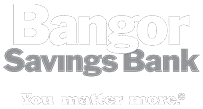
When you are traveling to foreign countries from the United States, it is often necessary to exchange your American dollars for the local currency. When you trade currency in one form for currency in another, you will see that it is not a dollar for dollar transaction. Instead, the value of a U.S. dollar in Mexico is different from the cost of a U.S. dollar in Canada, Australia, or even France.
To make matters even more interesting for travelers, currencies in the world market continuously gain and lose value, so the exchange rate is always in a state of flux. You might discover that the same dollar is worth more in pesos, pounds, or yen tomorrow than it is today. Alternatively, it could be less. It is all about the economic conditions in one country relative to the economic conditions in another.
Do a little research before you head out to exchange currency. Know what the going exchange rate for the currency in question is on any given day and then look for places known for dealing fairly with travelers looking to exchange funds. Smarter Travel recommends places like the following for fair exchanges:
- Banks
- Hotels
- Post offices
- American Express offices
Further, they go on to advise against tourist-filled areas like airports, train stations, and major attractions. Smarter Travel also recommends that you avoid exchange rates that appear too good to be true as they could be scams or may even involve counterfeit money.
Exchange Methods
There are two primary methods for exchanging currency:
- Floating currency.
- Pegged currency.
The current market determines floating exchange rates. Supply and demand can have a substantial impact on how much a currency is worth on any given day with floating currencies. That is more common in countries that have economies that are mature and stable, like:
- The United States
- Great Britain
- Australia
- Canada
Floating currency makes exchanges more efficient because the markets adjust automatically for fluctuations in value.
If you are traveling to countries or regions where the currency is less stable, you will probably encounter a pegged currency system. That is an attempt by the government to prevent things like runaway inflation. You will likely only see this type of exchange rates in developing nations and other locations with emerging economies. One suggestion in this situation is to convert what you need in these currencies during your time in that country.
Best Practices for Exchanging Currency
USA Today has an excellent suggestion: convert at least some of your money to local currencies before you travel rather than after reaching your destination. Many of the more popular tourist locations charge higher exchange rates. Another bit of advice to consider is to visit banks and ATMs for exchanges as they often have lower rates.
Pay close attention to surcharges various facilities charge for converting currency. Some add a flat fee and others charge a percentage. If you are paying a hefty flat fee, it is worth considering the conversion of a significant amount of currency in a single transaction, rather than making multiple smaller exchanges.
If you choose to use your credit card while traveling as an easy way to convert currency, look into any fees or policies that may be associated with doing so. Also be prepared with multiple payment options. There may also be businesses where credit cards are not as universally accepted as they are here in the U.S.
Traveling the world can be very exciting. Be prepared and plan for exchange rates.
